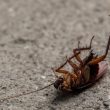Hidden allergens are everywhere in our everyday lives, often lurking undetected in the products we use and consume. Unfortunately, many people do not realize that they have an allergy until it is too late, as these allergens can be difficult to detect due to their hidden nature.
In this article, we will be looking at the most common types of allergens, where they can be found, and how to identify them. We will also discuss the health implications of exposure to hidden allergens and what you can do to protect yourself from them.
What are the common types of hidden allergens?
Several potential allergens can be present in everyday items. Here are some of the most common:
- Dust mites– These microscopic creatures are found in mattresses, carpets, pillows, and other soft furnishings. They feed on human skin cells and can trigger an allergic reaction if inhaled.
- Mold spores– Mold can be found in damp environments such as bathrooms and basements, and can cause sneezing, itchy eyes, and coughing. When mold spores are inhaled, they can cause an allergic reaction.
- Pet dander– Pet fur or feathers can contain proteins that can trigger an allergic reaction in some people. Some people may also be allergic to the saliva of certain animals.
- Food allergens- Some food items such as peanuts and shellfish can trigger an allergic reaction in sensitive individuals. There are other hidden sources of food allergens, such as processed foods or even medications that contain the allergen.
- Chemical irritants– Chemicals used in products such as cleaning supplies, detergents, and perfumes can trigger an allergic reaction.
- Pollen– Pollen from flowers and plants can also trigger an allergic reaction. If you are allergic to pollen, it is best to stay indoors during peak times of the year.
Now that we have identified the common types of hidden allergens, let’s take a look at how to identify them.
How can I identify hidden allergens?
The most reliable way to identify hidden allergens is to take allergy tests at home or visit your doctor for allergy testing. These tests involve taking a sample of the allergen and then measuring your body’s reaction to it.
Furthermore, you should also look for signs of hidden allergen in everyday items such as food packaging and household products. Pay attention to ingredient lists and check for warning labels that mention potential allergens. It is also important to be aware of the common types of allergens and keep an eye out for them in your environment.
Now that we have identified the common types of hidden allergens and how to identify them, let’s talk about the health implications of exposure to these allergens.
What are the health implications of exposure to hidden allergens?
Exposure to hidden allergens can lead to a range of health problems. These include symptoms such as the following:
- Sneezing
- Itchy eyes, throat, and nose
- Coughing and wheezing
- Skin rashes or hives
- Swelling of the face, lips, and tongue
- Nausea and vomiting
- Anaphylaxis (a severe allergic reaction) in some cases
If you are experiencing any of these symptoms, it is important to seek medical attention as soon as possible.
What can I do to protect myself from hidden allergens?
The best way to protect yourself from hidden allergens is to identify and avoid them where possible. Here are some tips to help you protect yourself:
- Keep your home and workplace clean and free from dust, mold, and pet dander.
- Avoid using scented candles or air fresheners.
- Read labels carefully before buying food products.
- Stay away from areas with high pollen counts such as parks and gardens.
- Wear a face mask when cleaning to protect yourself from dust and other allergens.
By following these tips, you can minimize your exposure to a hidden allergen and reduce your risk of developing allergic reactions.
Do you have any other tips for protecting yourself from hidden allergens? Share them in the comments section below.







